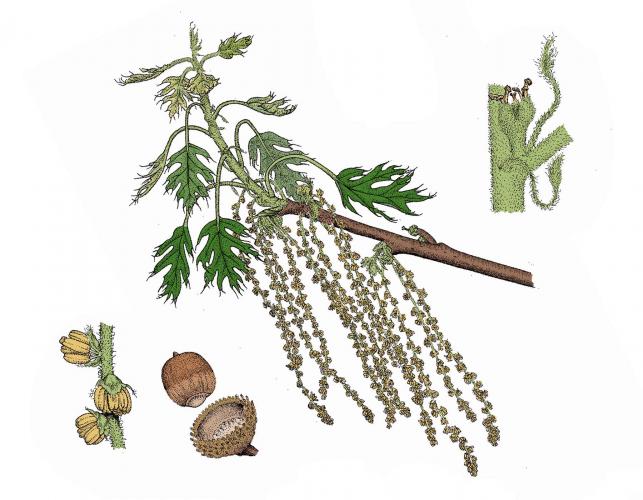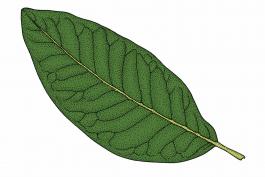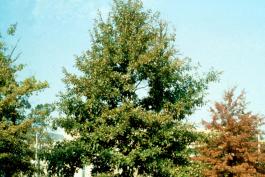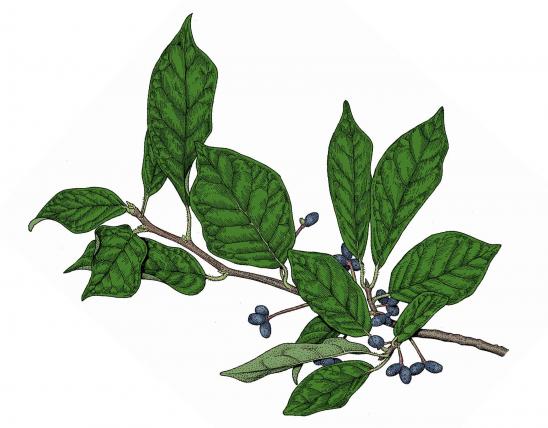
Shingle oak is a medium-sized tree with a straight trunk and an open, broadly rounded crown.
Leaves are alternate, simple, 4–6 inches long, 1–2 inches wide, broadest above the middle, oblong-elliptical, with a shiny upper surface; tip with a single bristle. This is the only Missouri oak with large, entire (lobeless and toothless) leaves. Leaves turn yellowish or reddish brown in autumn; dead leaves often persist on the tree through winter.
Bark is smooth, brownish-gray when young; nearly black with broad ridges and shallow fissures with age.
Twigs are slender, dark green to reddish-brown; gray-brown, smooth at maturity.
Flowers April–May, in catkins.
Fruits September–October; acorns solitary or in pairs; nut light to dark brown, often with pale stripes, shiny, broadest at the base and rounded at the tip, about ½ inch long; cup covering a third to half the nut, with brown, flattened, hairy scales. Seed bitter; acorns ripen in autumn of the second year.
Similar species: Willow oak (Q. phellos) also has entire leaves, but they are narrower, and in Missouri it only occurs naturally in the Bootheel.
Height: to 80 feet.
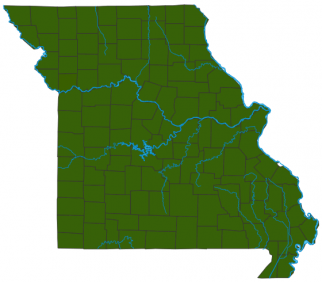
Statewide except for a few south-central and western counties.
Habitat and Conservation
Occurs in upland ridges, slopes, ravines; lowland areas in valleys and along streams; and borders of prairies. Blue jays can carry acorns up to a mile from a parent tree, tucking the nuts into grassy litter to eat later; many of these acorns are never retrieved and germinate instead. In this way, shingle oaks can colonize disturbed areas where no trees are growing. It is common to find them, along with honey locust and eastern red cedar, on old pastures that are reverting back to forest.
Human Connections
It is said that early French Creole colonists in Illinois used this species of oak to provide wooden shingles for their homes (it can easily be split into thin sheets); apparently some traditionalists in the South still use it for housing shingles. It also makes a nice ornamental tree.
Ecosystem Connections
The acorns are eaten by many species of birds and mammals. Any tree that retains leaves in winter provides better cover for animals during bitter weather than trees that are bare. This oak is a pioneer species; like cedar and honey locust, it is one of the first trees to colonize a disturbed area.



